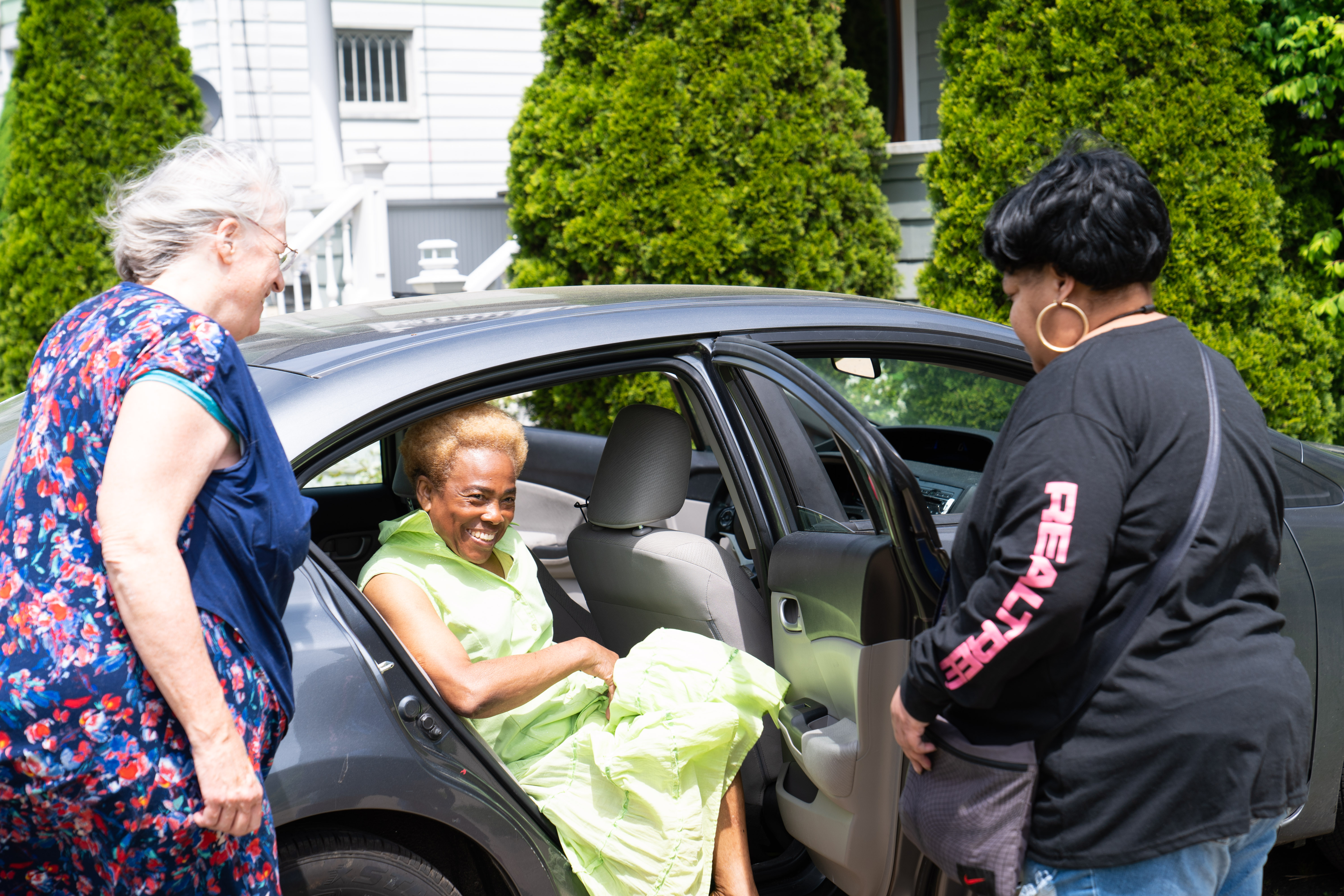In the quest to increase the number of rides given each month, transportation providers would be remiss if there wasn’t an effort to increase services to family caregivers. The Caregiving in the US 2020 survey showed that 80% of family caregivers provide transportation for their loved ones. With an estimated 53 million family caregivers in the US, that means over 42 million caregivers provide transportation for an older adult or person with a disability. Another eye-opening statistic, according to the same survey, is that only 25% of these caregivers received help with transportation. That is a large group of people who could benefit from transportation services, which means increased rides on your system for people who need them and reduced responsibilities for family caregivers.

North Central Kansas Coordinated Transit District OCCK, Inc., Salina, KS
Family caregivers are adult children, spouses, siblings, parents and neighbors who help loved ones who are unable to live independently. They help with many things such as housekeeping, preparing meals, paying bills, managing medication and transportation. On average, family caregivers spend over 20 hours/week providing care, leaving limited time to care for themselves. This puts caregivers at a higher risk of health problems, depression and anxiety. High levels of stress can be alleviated for caregivers when they get help with some of their responsibilities. Transportation providers can be part of their support system by making sure rides are accessible to the people they are caring for as well as the caregivers themselves.
To get you pointed in the right direction, here are some things that you should know about family caregivers.
- Caregivers often don’t know what transportation services are available and are too busy to research the options. It’s important to target outreach to family caregivers. Connect with caregiver support professionals at Area Agencies on Aging, Centers for Independent Living, Human Service agencies and non-profit respite organizations. Provide them with an inventory of available services that include details such as service area, time of operation, cost, eligibility and level of service. This information is the first step in completing the My Transportation Plan Tool which helps caregivers create a transportation support plan. Ask the agency to pass on the information to the caregivers they work with or offer to speak at a support group or caregiver class.
- Caregivers see themselves only as family, not a Personal Care Attendant and downplay their role of providing support. This is important to remember when considering the ADA Rule that a Personal Care Attendant (PCA) can ride along fare-free. (See Chapter 9.8 in FTA Circular 4710.1) Understand that family caregivers frequently act in the capacity of a PCA but would never consider themselves to be a PCA. Check your language and be sure to explain that if the caregiver is assisting with a necessary task at some point during the trip, they can ride fare-free.
- Caregivers worry about someone else taking care of their loved one. Train staff to work with older adults and people with disabilities. Use NADTC’s Access Matters videos to train drivers to be more sensitive to the needs of people who have disabilities who rely on public transportation. Consult NADTC’s brochure Assisting Passengers with Alzheimer’s and Dementia. Tell or show caregivers about the training you provide and the safety measures that are in place. Share examples of other riders with disabilities who have successfully used your service. Encourage caregivers to ride along at first to see how it goes.
- Many caregivers and care recipients have not used public transportation before. Be sensitive to caregiver and care recipient’s hesitation to use your transportation. Teach them about the services you offer. Provide services like travel training and bus buddies and show people how to use online scheduling tools or apps to help them feel comfortable trying your transportation service.

Area Agency on Aging of SC Connecticut, North Haven, CT
- Caregivers may need encouragement to receive help. Remind them that accepting help is a sign of strength, not weakness. Use empathetic language and offer practical examples of how your program can be a benefit for both the caregiver and the care recipient. Point out that while it might be easier to do it themselves in the short-term, learning how to use a transportation program will save time and provide options in the long run. After caregivers discover the benefits, they’ll thank you and come back for more.
The efforts you take learning about and serving family caregivers can be rewarded by increased rides for those who need them and new partnerships with caregiver support professionals.
This blog was written by Jane Mahoney, Training and Technical Assistance Specialist for the National Aging and Disability Transportation Center
Learn more about Caregiving and Transportation in this NADTC video, Amplifying Voices of Caregivers in Transportation.

Leave a Reply